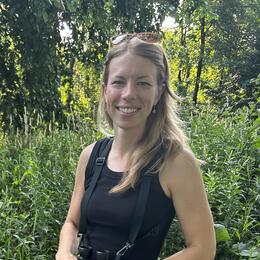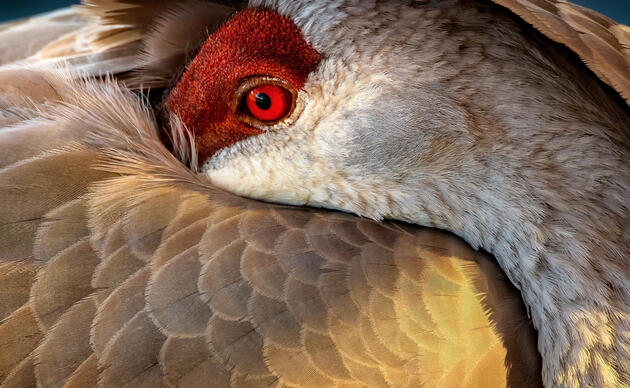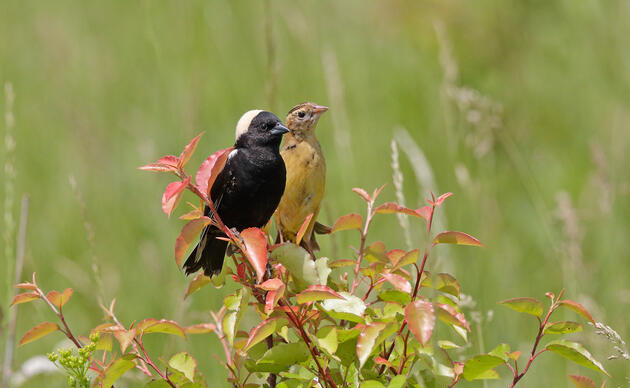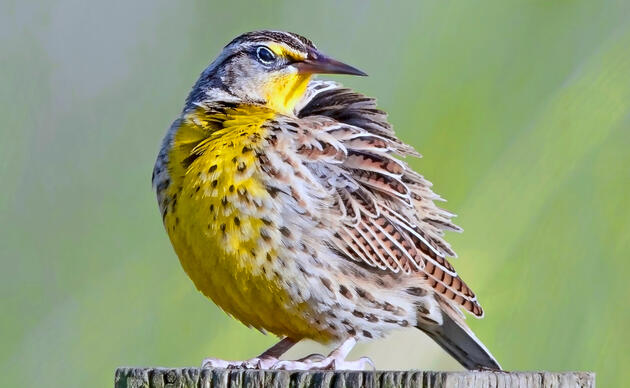It’s 5:30 a.m. and I have just arrived in the middle of a pasture where the weight of the dew is bending grasses and dark forms are moving slowly through the mist a few hundred feet away. I start my timer and tune in to the sounds. There are meadowlarks singing from fence posts in three directions. A grasshopper sparrow bounces around me. This is the life!
The dark forms are cattle grazing on a ranch enrolled in the Prairie Management Toolbox program I implement for Audubon Dakota. Audubon Dakota cost shared infrastructure to allow improved grazing management, and I am here conducting bird surveys to see how that grazing management has impacted the avian community.
Later in the day, when I walk over the hilltops of this ranch through little bluestem, purple coneflower, prairie dropseed, and numerous other species of native vegetation I see butterflies dip and soar while the hum of insect life has replaced the cacophony of bird song from this morning.
For the past 2 ½ years I’ve been a range ecologist working with landowners who value the role native grassland and livestock play in creating and maintaining habitat for grassland dependent wildlife. For the next three years, I’ll be doing the same important work with these landowners but with an additional focus on pollinators.
Audubon Dakota has been awarded the largest of 11 Monarch and Pollinator Conservation Fund grants this year from the National Fish and Wildlife Foundation. The funds support the continuation of the eastern Dakotas range ecologist’s work (that’s me!). This opportunity allows us to focus even more on delivering technical and financial assistance to producers to expand the benefits for grassland dependent species that we’ve seen through our working lands programs like the Audubon Conservation Ranching initiative, the Prairie Management Toolbox, and new initiatives like the Conservation Forage Program.
As a bird conservation organization in two prairie states where most of the land is privately owned, Audubon Dakota focuses efforts on partnering with landowners and producers who manage grassland to help them increase the quality, connectivity, quantity, and size of available bird and wildlife habitat. For the past 100 years, North Dakota’s grasslands have been under siege by invasive species, development, and conversion. If we lose the diversity of plant species in the grasslands that are left and fail to restore grassland acres in strategic areas where they have been lost, we also lose the rich diversity of birds and pollinator insect species that depend on those places.
Here in the Dakotas, our prairies are home to significant remnant habitat for the federally threatened Dakota skipper butterfly. Both states are within the Regal fritillary’s range, a butterfly currently under review for federal listing. And the eastern portions of North and South Dakota are part of the Monarch butterfly’s core conservation area. With the grant funding from NFWF, these species as well as native bees, moths, and other pollinators will benefit from improved habitat through invasive species removal, prairie restoration, reduced pesticide use, and carefully planned rotational grazing.
As part of the partnership with landowners and producers in our working lands programs, Audubon Dakota collaborates with them to develop habitat management plans and restoration management plans. These multiyear guides outline best practices for developing, maintaining, and improving habitat. The support in the coming years from this grant award will keep these plans coming and expand their scope. Wildlife native to the landscapes we work in, particularly grassland birds, monarchs, and other pollinators, benefit from this careful planning and landowner support.
This funding will also help quantify the positive impacts our restoration work has on pollinator communities by incorporating Integrated Monarch Monitoring Protocols into our monitoring schedule. This gives us a chance to better tell our story and share the positive message of the work Audubon is doing in the Dakotas.
That’s not all I’ll get to do thanks to this funding. It is easy to get excited about the expanded impact I can make for conservation by connecting landowners with additional complementary conservation programs. The collaborative outlook among the staff of agencies in the Dakotas like NRCS, Ducks Unlimited, Pheasants Forever, The Nature Conservancy, US Fish and Wildlife Service, the North Dakota Natural Resources Trust, the state wildlife agencies, and others helps my role immensely. As the eastern Dakotas range ecologist whose position is supported by this new grant funding, I look forward to working with these creative colleagues in new ways to move the needle in the right direction for pollinators.
So, thanks to the award of this incredibly competitive grant, we will be able to partner with more landowners, improve management on and restore more acres, develop more habitat management plans, and create more collaborations. At this time next year, I’ll still be sitting inside on a cold, snowy afternoon daydreaming about those days of bird surveys during the field season, but I’ll also get to daydream about wandering through milkweed and counting monarchs as they float up from a restored prairie. And I’ll know that we are doing good work for all of the wild things that inhabit our great states!




